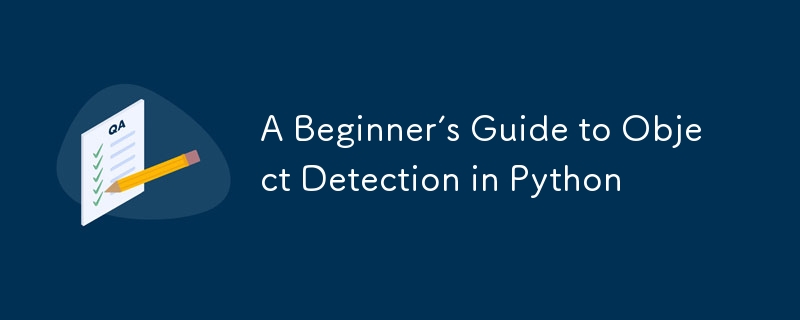

Object detection is one of the most exciting areas in computer vision, allowing machines to recognize and locate objects in images or videos. This guide will introduce you to object detection using Python, helping you implement a basic detection pipeline with popular libraries. Whether you're a beginner or want to build on your existing skills, this tutorial will provide essential insights to get started.
Object detection involves two primary tasks:
This makes it more complex than simple image classification, where the model just predicts class labels. Object detection requires predicting both the class and the location of the object in the image.
To begin object detection in Python, you'll need a few libraries.
Head to python.org and download the latest version of Python (3.8+).
We'll use OpenCV for image processing and TensorFlow for object detection.
pip install opencv-python tensorflow
Optionally, install Matplotlib to visualize detection results.
pip install matplotlib
Instead of training from scratch, use pre-trained models from TensorFlow’s Object Detection API or PyTorch. Pre-trained models save resources by leveraging datasets like COCO (Common Objects in Context).
For this tutorial, we’ll use TensorFlow’s ssd_mobilenet_v2, a fast and accurate pre-trained model.
Here’s how to implement a simple object detection pipeline.
import tensorflow as tf
# Load the pre-trained model
model = tf.saved_model.load("ssd_mobilenet_v2_fpnlite_320x320/saved_model")
You can download the model from TensorFlow’s model zoo.
import cv2 import numpy as np # Load an image using OpenCV image_path = 'image.jpg' image = cv2.imread(image_path) # Convert the image to a tensor input_tensor = tf.convert_to_tensor(image) input_tensor = input_tensor[tf.newaxis, ...]
# Run inference on the image
detections = model(input_tensor)
# Extract relevant information like bounding boxes, classes, and scores
num_detections = int(detections.pop('num_detections'))
detections = {key: value[0, :num_detections].numpy() for key, value in detections.items()}
boxes = detections['detection_boxes']
scores = detections['detection_scores']
classes = detections['detection_classes'].astype(np.int64)
# Draw bounding boxes on the image
for i in range(num_detections):
if scores[i] > 0.5: # Confidence threshold
box = boxes[i]
h, w, _ = image.shape
y_min, x_min, y_max, x_max = box
start_point = (int(x_min * w), int(y_min * h))
end_point = (int(x_max * w), int(y_max * h))
# Draw rectangle
cv2.rectangle(image, start_point, end_point, (0, 255, 0), 2)
# Display the image
cv2.imshow("Detections", image)
cv2.waitKey(0)
cv2.destroyAllWindows()
This code loads an image, detects objects, and visualizes them with bounding boxes. The confidence threshold is set to 50%, filtering out low-confidence detections.
Ready to take your object detection skills to the next level?
Object detection in Python opens up a world of possibilities in industries like healthcare, security, and autonomous driving. With tools like TensorFlow and OpenCV, you can quickly implement detection pipelines using pre-trained models like YOLO or SSD. Once you're familiar with the basics, you can explore more advanced topics like real-time detection and custom model training.
Where will you apply object detection next? Let’s discuss in the comments below!
The above is the detailed content of A Beginner's Guide to Object Detection in Python. For more information, please follow other related articles on the PHP Chinese website!
 Main contents of database conceptual design
Main contents of database conceptual design
 The core technologies of the big data analysis system include
The core technologies of the big data analysis system include
 What exactly is fil coin?
What exactly is fil coin?
 Introduction to the main work content of front-end engineers
Introduction to the main work content of front-end engineers
 Characteristics of two's complement arithmetic
Characteristics of two's complement arithmetic
 Win10 does not support the disk layout solution of Uefi firmware
Win10 does not support the disk layout solution of Uefi firmware
 OuYi exchange usdt price
OuYi exchange usdt price
 How to refresh bios
How to refresh bios




